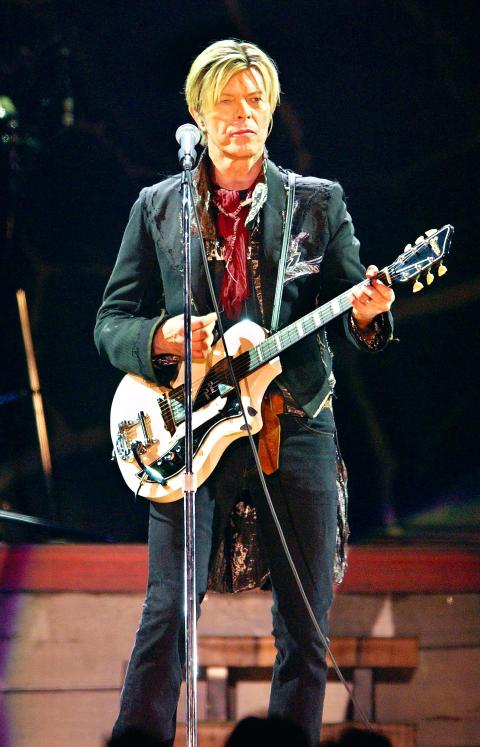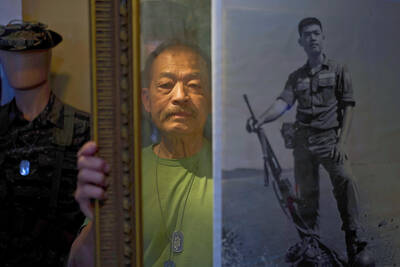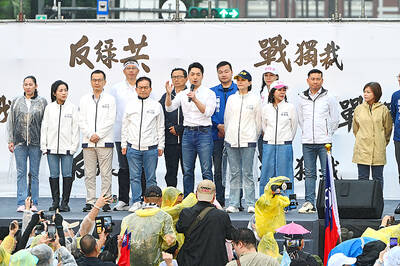Blackstar, David Bowie, Sony
A lot of questions arose when David Bowie unveiled Blackstar, the 10-minute title track of his new album, as a music video in November. What was the meaning of the clip’s sci-fi surrealism? What had inspired its ominous lyrics? And, perhaps more practically, who were these musicians helping to shape its gnarly but limber style?
One of those questions, at least, is answerable. Bowie, an elusive rock star whose music has been as famously changeable as his image, enlisted the Donny McCaslin Quartet, a rugged jazz-rock combo featuring McCaslin on saxophones, Jason Lindner on keyboards, Tim Lefebvre on electric bass and Mark Guiliana on drums. And for all of Blackstar, Bowie plugged right into the intensely responsive metabolism of the band, opening an unlikely new door in his nearly 50-year recording career. The album is due out on Friday, his 69th birthday, on ISO/Columbia.

After the revamped rock snarl of his 2013 album, The Next Day (Columbia), Bowie was determined to seek inspiration elsewhere. Tony Visconti, his main producer and collaborator since Space Oddity, from 1969, said that along the way, they had admired how Kendrick Lamar’s album To Pimp a Butterfly stood both within and outside hip-hop, especially in its relationship to jazz.
“David and I had long had a fascination for Stan Kenton and Gil Evans,” Visconti added, referring to two prominent jazz orchestrators of the mid-20th century. “We spoke about that virtually the first time we met, back in the ‘60s. We always saw pop and rock as something we were quite capable of doing, but we always held the jazz gods on a pedestal above us.”
The first inkling of this new direction came in the final weeks of 2014, when Bowie released Sue (Or in a Season of Crime), a noirish track featuring the Maria Schneider Orchestra, with McCaslin as a soloist. (It was issued both as a single and as part of a three-disc compilation, Nothing Has Changed.) There was talk about Schneider’s continued involvement, but she was too focused on her own album. She recommended McCaslin’s band.

Photo: AFP
McCaslin, 49, has been a stalwart on the New York jazz scene for more than 20 years — an improviser with an aptitude for controlled abandon, often uncorking solos that feel both wild and cogent. He recently received a Grammy nomination for best improvised jazz solo, for the deft, swirling tenor saxophone work on Arbiters of Evolution, from that album Schneider was working on, The Thompson Fields (ArtistShare). (It has a nomination, too.)
About four years ago, McCaslin made a hard turn toward groove as a bandleader, enlisting the other members of the quartet, who have their own separate histories together. The band’s first album on Greenleaf Music, Casting for Gravity, came out in 2012; a follow-up, Fast Future, appeared last year. The group’s usual haunt is the 55 Bar, where Bowie showed up unannounced to hear them early last year.
“What was really nice was he heard us truly in our most comfortable environment,” Guiliana said. “We were kind of just throwing down.”
Both parties did their homework. Bowie had listened intently to Casting for Gravity as well as Beat Music: The Los Angeles Improvisations, a self-released album by Guiliana.
“And we watched their YouTube videos,” Visconti said. “We were spying on them. David said to me, ‘Really listen a lot to this, and get in your mind how they work.’”
Meanwhile, McCaslin received two batches of demo recordings from Bowie featuring his guitar parts: one made at the Magic Shop with Visconti and others, and one created at his home studio. McCaslin led a crash rehearsal in a Brooklyn basement, so that the tunes would be familiar in the studio.
The band set up in one room at the Magic Shop, and rather than taking his place in an isolation booth — or for that matter, in the control room — Bowie stood among them, at a microphone. He ended up singing every take live with the band even though the resulting vocal tracks, with so much sound bleed from the drums, would be unusable.
“It was unbelievably inspiring,” Guiliana said. “He was in top form from start to finish. Even if he didn’t have lyrics, and it was more of a guide melody, it still had this commitment, and I think that absolutely affected everybody’s performances. It really surprised me.”
While the bass and drum parts from the demos were well developed, there was a translation process for Lindner, who used a total of nine keyboards with various distortion and effects pedals.
“What I like is to just leave certain notes ringing, if they work,” Lindner said. “It’s kind of like how a guitarist has open strings. I try to imagine something like that — try to find the open strings on the keyboard, where the note would naturally resonate with the tonality and the feeling of what’s going on. That gives a more grass-roots feeling and a less calculated feeling.”
Only one track on the album, the grandly bittersweet ballad Dollar Days, was created without a demo for reference: Bowie played that song on an acoustic guitar, and the musicians learned it by ear. But other tracks had elements that developed on the spot, like Lefebvre’s opening bass vamp on Lazarus, and an upward modulation in a thrashing new take on Sue (Or in a Season of Crime). Some tunes, like “‘Tis a Pity She Was a Whore,” veer thrillingly toward overdrive; as McCaslin wails during the homestretch, Bowie can be heard yelping in excitement, sounding hoarse (“Woo!”).
Most tracks were first or second takes, not just in the rhythm section but also for McCaslin, who recorded in the isolation booth but didn’t redo any solos. (Some parts — including a soaring solo by the guitarist Ben Monder on the album’s closer, I Can’t Give Everything Away — were added later.)
Throughout the process, Bowie, it seems clear, was invested in the idea of a working band, and this one in particular.
“The only general instruction we received was: Have a good time,” Lindner said. “He trusted us so much.”
Visconti echoed that sentiment, adding that jazz musicians pushing toward rock produce a different energy than rock musicians stretching toward jazz. “A really great musician can play any form of music,” he said. “These were some of the best musicians I’ve ever worked with in my life.”

As we live longer, our risk of cognitive impairment is increasing. How can we delay the onset of symptoms? Do we have to give up every indulgence or can small changes make a difference? We asked neurologists for tips on how to keep our brains healthy for life. TAKE CARE OF YOUR HEALTH “All of the sensible things that apply to bodily health apply to brain health,” says Suzanne O’Sullivan, a consultant in neurology at the National Hospital for Neurology and Neurosurgery in London, and the author of The Age of Diagnosis. “When you’re 20, you can get away with absolute

When the South Vietnamese capital of Saigon fell to the North Vietnamese forces 50 years ago this week, it prompted a mass exodus of some 2 million people — hundreds of thousands fleeing perilously on small boats across open water to escape the communist regime. Many ultimately settled in Southern California’s Orange County in an area now known as “Little Saigon,” not far from Marine Corps Base Camp Pendleton, where the first refugees were airlifted upon reaching the US. The diaspora now also has significant populations in Virginia, Texas and Washington state, as well as in countries including France and Australia.

On April 17, Chinese Nationalist Party (KMT) Chairman Eric Chu (朱立倫) launched a bold campaign to revive and revitalize the KMT base by calling for an impromptu rally at the Taipei prosecutor’s offices to protest recent arrests of KMT recall campaigners over allegations of forgery and fraud involving signatures of dead voters. The protest had no time to apply for permits and was illegal, but that played into the sense of opposition grievance at alleged weaponization of the judiciary by the Democratic Progressive Party (DPP) to “annihilate” the opposition parties. Blamed for faltering recall campaigns and faced with a KMT chair

A police station in the historic sailors’ quarter of the Belgian port of Antwerp is surrounded by sex workers’ neon-lit red-light windows. The station in the Villa Tinto complex is a symbol of the push to make sex work safer in Belgium, which boasts some of Europe’s most liberal laws — although there are still widespread abuses and exploitation. Since December, Belgium’s sex workers can access legal protections and labor rights, such as paid leave, like any other profession. They welcome the changes. “I’m not a victim, I chose to work here and I like what I’m doing,” said Kiana, 32, as she